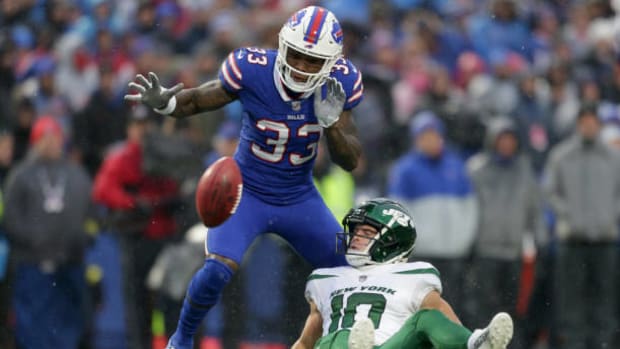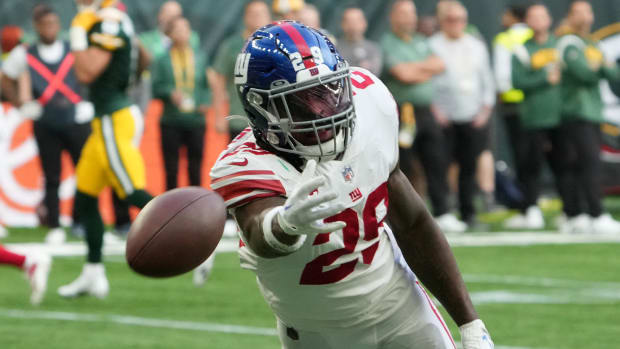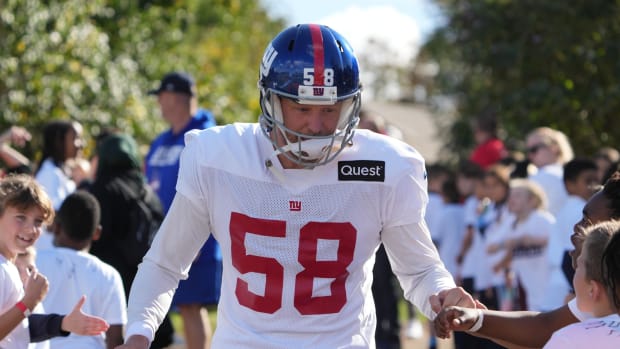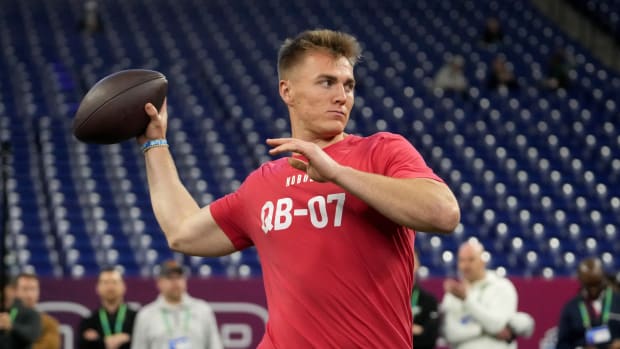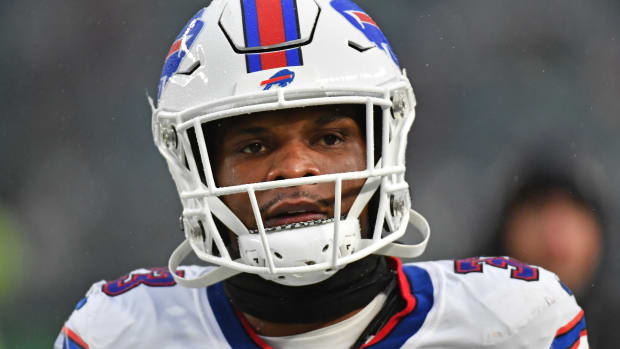Jabrill Peppers: The Good, The Great, and The Ugly
Many fans have been interested in what the Giants defensive backfield will look like this season. Losing second-year cornerback, DeAndre Baker hurts as many believed he would make a significant jump in his second season.
What hasn't been discussed enough is the size and versatility being developed in the backfield, and nobody among the current group exemplifies that new philosophical direction more than Jabril Peppers, who may be one of the most versatile defensive backs in the NFL.
I previously explored the question if Peppers is a legitimate option at cornerback. Peppers could play corner, safety, outside linebacker or nickel at a high level, and that's what makes him special, though as I noted in my other article, Peppers as a full-time cornerback who plays a role similar to what James Bradberry is likely to play likely isn't int he cards.
There are things that Peppers does exceptionally well, and there are also areas where there is room for improvement. So let's get into the film and break it down.
The Good: Peppers is an explosive return man.
This is another aspect of Peppers' talents that isn't discussed nearly enough. Peppers is built like a running back, shifty like a slot receiver, with defensive back explosiveness and linebacker physicality. That is a perfect recipe for a special teams return man. He evokes memories of Eric Metcalf, and the Giants obviously could use a Metcalf-like returner.
In this first clip, Peppers is lined up for a punt return on the road against the Bears. This particular punt is shorter than he expected, but instead of charging it and fielding it in the air, he lets it bounce, and he gets a favorable bounce into his hands.
Once he gathers the ball, he takes a few steps to his right, which gets the coverage to react that direction. He then explodes left and finds a seam up the sidelines. He then uses his speed to gain significant yardage and put the Giants in an automatic field goal position.
In this next clip, Peppers fields the Buccaneers punt and immediately shakes a tackle. His size and strength allow him to shake off arm tacklers. His elite-level acceleration allows him to get to full speed quickly.
He then weaves in between the right hash and the numbers breaking a couple of other tackles. His speed, power, and physical build helped him bounce off defenders. He's finally brought down on the 15-yard line with his team in automatic field goal position.
This final clip illuminates all of Peppers' athletic skills. When he touches the ball, he turns into a legitimate running back, and he has all the skills that come with that claim. He fields the punt and avoids the first tackler.
He firsts jump cuts left, then right, and explodes up the field. He is able to run past several defenders and work his way into field goal range for his team. The level of balance, agility, explosion, and fearlessness is second to none, and his ability to run through tackles makes him ideal for what should be used as an offensive weapon.
One final thought about this. While Peppers did suffer a season-ending injury while returning punts, that's not a reason to permanently remove him from a role he does good enough to make an impact.
By that logic, should a player who suffers a season-ending injury playing his regular position be permanently retired from playing that spot just because he was injured?
Of course not, and in this case, neither should Peppers, though with that said, Peppers probably shouldn't be the full-time punt returner.
The Great: Run Defense
When people discuss physical safeties, they talk about Troy Polamalu, Ed Reed, Cam Chancellor, and the late Sean Taylor. They all had the ability to play at the third level, but they also had an innate instinct for sniffing out runs.
All of those safeties went about their business differently. Reed used intelligence and film evaluation, Polamalu was a freelancer, Chancellor operated within the scheme but Peppers, similar to Taylor, uses his elite athleticism to close the gap on a runner from any location on the field.
These next three clips look at Peppers versus the Vikings, who had one of the best running games in the NFL last season. You can see how Peppers is able to close the gap on the ball carrier from far away.
In this first clip, Peppers is playing a two-high safety at about 10-12 yards. The Vikings are lined up in double tights, and I-formation they run a buck sweep to the defenses left. The offense gets the kick-out block, and several defenders get cut blocked.
The back is able to identify the hole, he breaks an arm tackle and is looking to escape the cutback lane for a significant gain and possibly even a touchdown.
Peppers reads the run, and instead of overplaying the run to the outside, he pursues and closes down the distance to the ball carrier. When the back looks to hit the cutback lane, Peppers is waiting for him. He holds the back up and allows his teammates to rally to the tackle.
This next clip sees the Vikings backed up on their own three-yard line. Peppers is lined up as a hash safety, but this time his is only seven yards off the ball. He probably had the tight end man to man if he released. The offense is running a zone away from Peppers.
The defensive line does a good just of pressing their faps, and it forces the running back to look for a cutback lane. There is a gap that the back tries to get to on the backside but Peppers, who is reading run once he sees the tight end blocking, accelerates so quickly into the gap that the back doesn't have a chance to get a full head of steam and is brought down for no gain.
In this next clip, Peppers makes a highlight-reel play. The offense sends a receiver in motion to the defense's right. They run an outside zone play designed to get the edge so their back can get on the perimeter and use his speed.
The offense does a great job of reaching the defenders necessary to have a successful play. The receiver would be left to block whichever defender showed up.
Unfortunately, he was not ready for Peppers, who came downhill full speed and kamikaze-like and who threw his body into the receiver, taking out the running back in the process, again aching what could have been a big running play.
The Ugly: Overaggressive
Like many special players, the things that make them great can sometimes get them in trouble.
For Peppers, it's his aggressiveness that can be a blessing and a curse. While it is mostly a blessing, the occasional curse can lead to trouble for the defense in a game.
In this first clip, the Buccaneers use Peppers' aggressiveness against him. You see him on the left side creeping down to blitz off the edge. Most defensive players are taught that if you are at the line of scrimmage and nobody blocks you, there's usually a reason for that, and it should send up as red flag.
Peppers who is determined to get a sack on the quarterback ignores these signs. He is unabated to the quarterback, and when the ball is thrown, all he can do is try to jump up to knock it down or tip it. The Buccaneers run a screen pass right to the area vacated by Peppers. It results in a considerable gain to Tampa Bay.
In this next clip, the Cowboys give the same buck sweep action that the Vikings ran, but they do it out of the gun. Peppers is lined up as a hash safety, but he is now on the play side of the run. Unlike on the backside versus the Vikings where he slow-played the run, he reads run here and attacks immediately.
The Cowboys quarterback pulls the ball and throws a post backside to the receiver who takes advantage of the area recently vacated by Peppers. Luckily the other safety is able to make a touchdown-saving tackle.
Final Thoughts
The conversation about the best way to utilize Peppers will continue to be a hot button in New York, probably well into the season. The guarantee is that Joe Judge and his staff will use him in some capacity.
The best arguments are those where multiple suggestions could be the right solution, and that's why the debate is so interesting and longstanding.
